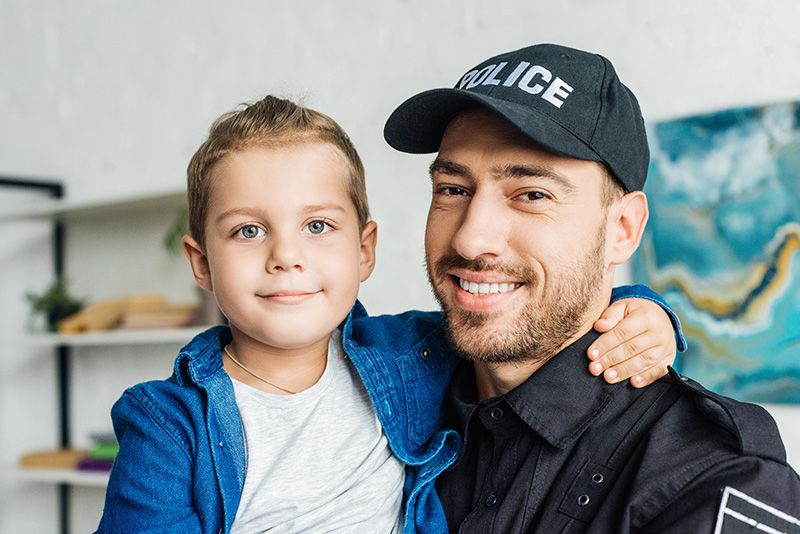Children diagnosed with autism spectrum disorder (ASD) are more likely to engage in challenging behavior than their neurotypical peers. Severity of these behaviors range from mild to very severe and include topographies such as aggression, self-injury, destructive behavior, pica, and elopement (Anderson et al., 2012; Mazurek et al., 2013). The likelihood of a crisis, or adverse event, increases as the severity of challenging behaviors intensifies. Severity relates to the impact of challenging behavior and is often determined as a measure of the frequency and/or intensity of an individuals’ disruptive behaviors as well as what reactive or preventative measures must be in place to mitigate a crisis. For example, aggressive behaviors that occur less frequently but have caused significant injury to another person might be considered severe; likewise, once instance of elopement may be considered severe if a child was located by first responders and subsequently hospitalized and the family must lock all exits in the home with a deadbolt to prevent elopement from occurring. An event that necessitates a higher level of care than an individual currently receives can result in a crisis and as a result, first responders may be called on to assist. However, there is a lack of information for families on what to do when a crisis event occurs, who should be called for assistance during a behavioral health crisis, and what first responders can do to assist individuals with autism and their families.

Behavioral health crises have detrimental outcomes on individuals and their families. Negative effects on the individual include injury to self, greater need for intensive services and supports, exclusion from community services, restrictive placements, restraint and/or sedation, and social stigma. Negative outcomes for caregivers can include injury, increased stress and burnout, poorer family functioning, unemployment, financial strain, and exclusion from community supports to name a few (Langley, 2017; Shepherd et al., 2018).
Crisis events in children with autism may be hard to predict and difficult to manage once they occur. For many autistic individuals, common crisis intervention strategies such as verbal de-escalation and other coping skills are ineffective and can even increase agitation. Likewise, developing a treatment for challenging behavior during a behavior crisis is also not appropriate. It is recommended that, when a crisis occurs, the immediate objective should be to eliminate the cause, or trigger, of the crisis. This might include providing preferred leisure or edible items, stopping the delivery of demands, providing attention from a preferred individual, or backing off physically and giving alone time. Although it might be unclear exactly what initiated the crisis, these strategies can also be used to de-escalate a crisis more quickly. If both eliminating the trigger and de-escalation strategies are unsuccessful, a crisis plan should be initiated. Crisis plans should be developed prior to a crisis event, or shortly thereafter, and should include specific steps to promote safety using appropriate behavioral management, setting up a safe environment, and contacting emergency services. Setting up areas in the home where it is safe to manage a crisis like a bedroom or padded area and having easy access to protective equipment like helmets, pads, arm guards, and other equipment that can be worn by a caregiver can reduce the impact of a crisis event. The crisis plan should be communicated to all individuals who provide care to or interact with a child with challenging behavior.

Nadrat Nuhu, PhD, BCBA-D

Alexis Pavlov, PhD, BCBA-D
Caregiver attempts at de-escalation may be unsuccessful and first responder services may be needed to manage challenging behavior, protect individuals and property, and direct individuals to other emergency services in a crisis (e.g., hospitalization; Dryden-Edwards & Combrinck-Graham, 2010). However, although first responder assistance may be necessary, caregivers are frequently reluctant to contact them due to a lack of confidence in first responders’ knowledge of how to best approach children with ASD (Love et al., 2020) and news stories of such interactions resulting in adverse events (Rahman, 2020). Caregivers’ concerns are further supported by research indicating a lack of improvement in interactions between first responders and individuals with ASD following educational programs aimed at increasing first responder knowledge (Gardner & Campbell, 2020). First responders may benefit from additional support from caregivers upon arrival to their behavioral crisis to better respond.
It is recommended that caregivers contact their local police precinct or fire stations prior to requiring their assistance during a crisis. At that time, caregivers can provide first responders with information regarding their child’s current communication capabilities, level of challenging behavior, preferences (e.g., activities, toys, or food), and effective de-escalation strategies and crisis plans. First responders will then be able to use this information to better assist the family in the future when a behavioral crisis does occur.
During a behavioral crisis, caregivers should be prepared to communicate to the first responder pertinent information regarding the situation and their child’s needs using short, succinct sentences. First responders have policies and procedures they must implement when arriving to a scene, and as a result, after providing vital information and answering questions, caregivers should be prepared to follow instructions delivered by the first responder. After a crisis, caregivers should review the sequence of events and identify areas of improvement. For example, caregivers may identify new strategies to use to de-escalate challenging behavior or identify new information to share with first responders as they are assisting the family.
Managing challenging behaviors exhibited by a child with ASD during a behavioral crisis can be difficult and may lead to detrimental outcomes for the individual and those in their environment. However, caregivers may be able to mitigate negative outcomes by implementing strategies to ensure that they themselves and first responders are better prepared for the needs of their child. By preemptively planning for how to manage a behavioral crisis, caregivers increase the likelihood that they will be successful in navigating crises even if they require first responder assistance.
Dr. Pavlov is a licensed psychologist and doctoral-level behavior analyst for the Intensive Outpatient and Crisis Admission Programs at Marcus Autism Center in Atlanta, GA. You may contact the authors at alexis.pavlov@choa.org or (404) 785-4456. Nadrat Nuhu, PhD, BCBA-D, is a Psychologist and Assistant Professor at Marcus Autism Center and Emory School of Medicine.
References
Anderson, C., Law, J. K., Daniels, A., Rice, C., Mandell, D. S., Hagopian, L., & Law, P. A. (2012). Occurrence and family impact of elopement in children with autism spectrum disorders. Pediatrics, 130(5), 870-877. https://doi.org/10.1542/peds.2012-0762
Dryden-Edwards, R. C., & Combrinck-Graham L. (Eds). (2010) Developmental disabilities from childhood to adulthood: What works for psychiatrists in community and institutional settings. JHU Press.
Gardner, L., & Campbell, J. M. (2020). Law enforcement officers’ preparation for calls involving autism: Prior experiences and response to training. Journal of Autism and Developmental Disorders, 50(12), 4221-4229. https://doi.org/10.1007/s10803-020-04485-5
Langley, E., Totsika, V., & Hastings, R. P. (2017). Parental relationship satisfaction in families of children with autism spectrum disorder (ASD): A multilevel analysis. Autism Research, 10(7), 1259-1268. https://doi.org/10.1002/aur.1773
Love, A. M., Railey, K. S., Phelps, M., Campbell, J. M., Cooley-Cook, H. A., & Taylor, R. L. (2020). Preliminary evidence for a training improving first responder knowledge and confidence to work with individuals with autism. Journal of Intellectual Disabilities and Offending Behaviour. http://doi.org/10.1108/JIDOB-04-2020-0007
Mazurek, M. O., Kanne, S. M., & Wodka, E. L. (2013). Physical aggression in children and adolescents with autism spectrum disorders. Research in Autism Spectrum Disorders, 7(3), 455-465. https://doi.org/10.1016/j.rasd.2012.11.004
Rahman, K. (2020, September). Police pinned 10-year-old boy with autism using a knee on his neck, lawsuit alleges. Newsweek. www.newsweek.com/boy-autism-knee-neck-police-lawsuit-1533807
Shepherd, D., Landon, J., Taylor, S., & Goedeke, S. (2018). Coping and care-related stress in parents of a child with autism spectrum disorder. Anxiety, Stress & Coping, 31(3), 277–290. https://doi.org/10.1080/10615806.2018.1442614






Thank you for sharing this information. As creator of a safety education program for Autistic adults, I would love receive more information and share your details with my students and their caregivers. Education is the best way to make a change in how we can manage behavioral crisis in our society.
Hi Melica –
Please feel free to share with your students! For more information, check out the Fall 2015 issue: “Autism Safety: The Criminal Justice System and First Responders”. Also, you will find more articles here: https://www.autismspectrumnews.org/?s=first+responders
[…] learning about the principles of ABA, understanding behavior plans, collecting data, and mastering crisis management techniques. This hands-on training equips behavior technicians with the necessary skills to support […]